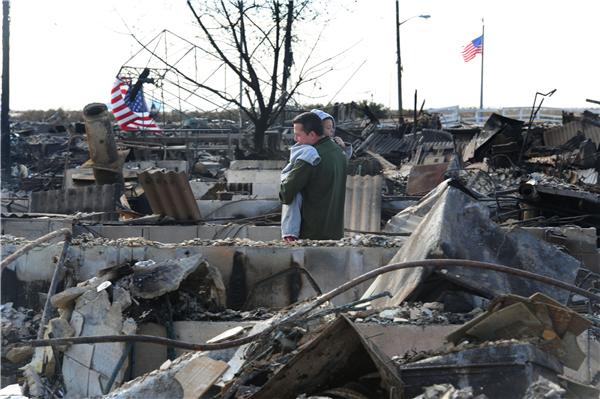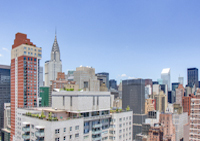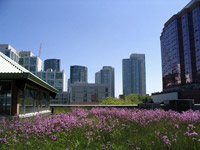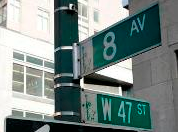 In the aftermath of Hurricane Sandy housing is becoming scarcer. And with cold weather on the way, city, state, and federal officials are trying to assemble a pool of vacant houses to supplement New York City's shelter system. While many people have been clinging to their apartments despite not having heat or hot water, officials are worried that another wave of people, numbering in the hundreds if not the thousands, will seek shelter as temperatures fall. “We feel a real imperative to have something in place when the second surge comes,” said Matthew M. Wambua, the city’s housing commissioner. With the electrical outages and the encroaching winter season, many people are left wondering where, and how, they are going to stay warm.
In the aftermath of Hurricane Sandy housing is becoming scarcer. And with cold weather on the way, city, state, and federal officials are trying to assemble a pool of vacant houses to supplement New York City's shelter system. While many people have been clinging to their apartments despite not having heat or hot water, officials are worried that another wave of people, numbering in the hundreds if not the thousands, will seek shelter as temperatures fall. “We feel a real imperative to have something in place when the second surge comes,” said Matthew M. Wambua, the city’s housing commissioner. With the electrical outages and the encroaching winter season, many people are left wondering where, and how, they are going to stay warm.
So far rebuilding has been slow. Officials discussed a variety of ways to speed up this process, including using modular housing. Meetings last week however focused more on creating a clearinghouse that would match displaced families with vacant apartments. Developers and landlords expressed an interest to pitch in, but they also raised issues that needed to be addressed first. This led to lengthy meetings between state and city officials and members of the Real Estate Board of New York, the Rent Stabilization Association, and the State Association for Affordable Housing. One topic discussed in particular was creating a system by which people who apply to the Federal Emergency Management Agency, FEMA, for housing would be matched with landlords who have vacant apartments. Tenants could pay directly with a FEMA voucher, or obtain an apartment through an agency like the Red Cross.
There are two problems with this plan however. In the New York Area, FEMA provides $1,800 a month in rental assistance for up to 18 months. While that would cover most of the housing in Brooklyn or Queens, developers said it falls short of covering most housing in Manhattan. The need for temporary housing remains even in Manhattan, where the heating and electrical systems in complexes in the Lower East Side were swamped with seawater after Hurricane Sandy blew through. In addition to this there simply isn’t a lot of space to give. It is ultimately unclear on how many apartments might be included in the pool, given the city’s low vacancy rate. Some landlords in Brooklyn and Queens called the Rent Stabilization Association on Monday offering apartments for displaced families. But by Thursday most of those units were now occupied.





